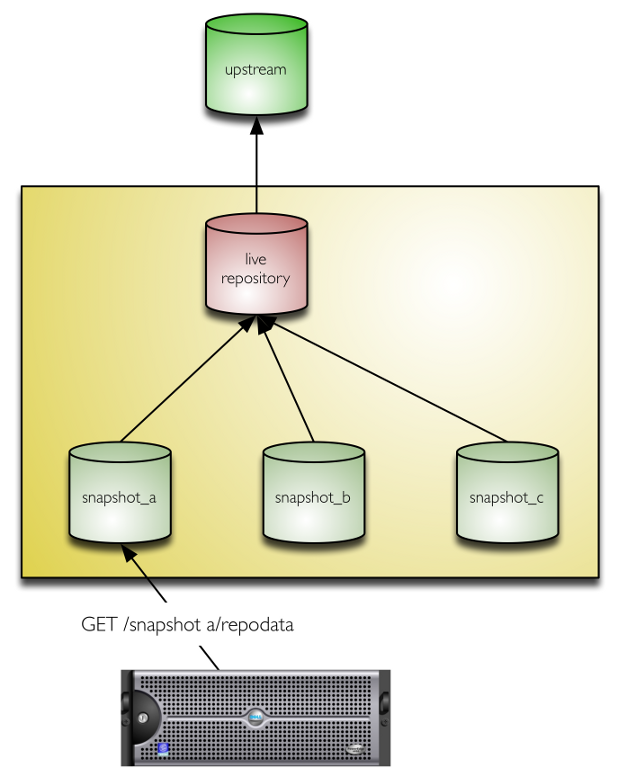Introduction
The new SPMA makes it easy to install new packages, and their dependencies. However, there may be dependencies that are not part of the profile and that might get updated at random times.
We want to avoid such uncontrolled upgrades. One way to avoid them is to do the old-style package management: specify everything in the profile, and fix the dependency hell “manually”. This document proposes a different way to prevent these random upgrades, by taking snapshots of the Yum repositories.
Granted, some packages must stay at the same version independently of the contents of the current Yum repositories. For those we’ll use the old API, and lock down their versions. But I suspect we’ll benefit from letting some dependencies free.
Repository mirroring process
The diagram below shows how we could mirror one repository:

The upstream repository would be mirrored with rsync, reposync, wget,
or whatever other tool.
After this mirroring is completed, a snapshot would be taken. You can use use LVM snapshots, store the software in a snapshotting filesystem like ZFS, BTRFS or GPFS, or whatever fits your organisation.
Mapping nodes to snapshots
We can map nodes to snapshots in two ways:
In the profiles
Nodes would choose in their profile which snapshot they are “subscribed” to.
The repository templates would specify the URL like this:
structure template repository/foo;
...
"url" = format("http://server/packages/%s/repo_name", OS_SNAPSHOT_ID);
where OS_SNAPSHOT_ID is some global variable that reflects the date,
or something similar. Rolling an upgrade would mean changing this
variable.
We can even find a way for defining different snapshots for different repositories. For instance, use last week’s snapshot of EPEL but last month’s snapshot of SL.
This has the disadvantage of requiring editing Pan code for routine operations. But it offers any desired granularity:
- For the entire organisation
- Per cluster
- Per node
- Per machine type.
- Per repository
- Any other.
In the repository server
Another approach would be to set symbolic links or bind mounts to each snapshot.
The OS_SNAPSHOT_ID variable above would contain any link present in
the server. The software managing the mirrors and snapshots would
also set up these symlinks according to the organisation’s policy.
Handling these symlinks in a consistent way may not be trivial.
Also, it’s unclear how friendly this would be to caching proxies that users might put in front of the repository.